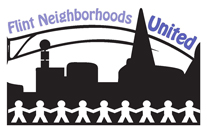There will be a Flint Planning Commission meeting tomorrow evening (Tuesday, September 8) at 6:00 pm on the third floor of City Hall. The agenda includes a public hearing for a special regulated use for a medical marijuana provisioning center at 901 N. Vernon Avenue. (This is at the northeast corner of Vernon and Robert T. Longway.) The public is always welcome to attend the meeting. While there is a public comment period at the start of the agenda for general planning matters, the public hearing has a separate portion dedicated for those wishing to speak in favor or opposed to the specific item under consideration.
In terms of the August 23 meeting, we had a public hearing there for a requested zoning change. Kettering University requested a zoning change from B-Two family residential to D-2 Neighborhood Business District for properties on the block between Stone Street and Grand Traverse along 4th Ave. They intend to build a multiuse building with a fast food restaurant on the ground floor.
Because the property in question was, until recently, part of the Carriage Town historic district, I and some of the other commissioners were interested to know what Kettering’s intention was in terms of how the proposed commercial property would visually fit in with the surrounding area. Kettering’s architect was present and expressed that the building would be designed to complement the character of the surrounding buildings. Several neighbors spoke in favor of the re-zoning request, indicating that they were reassured by Kettering’s commitment to upholding the design of the neighborhood and appreciated the efforts of the university to clean up blight in the area. One neighbor opposed the rezoning request and indicated he intended to make a legal claim on the property after having tended it for some years. While the potential legal claim will be vetted prior to the final decision by City Council, the Planning Commission voted to recommend that Council re-zone the property. The main reason is that in the new Land Use plan, the property is part of the University Avenue Core district, and the neighborhood commercial district from the existing zoning code is a closer match to what the new zoning will be once the new zoning code is adopted than the current B-two family home designation is.
This was Megan Hunter’s final meeting as Chief Planning Officer for the City of Flint. I certainly wish her well as she heads off to Salinas, CA. One of the things I truly admire about her work is that she has a true commitment to community engagement. I saw her many times stay late after meetings to talk with residents who had a concern or were wary of trusting the process. She helped to build that trust as we made a plan for our whole community. The Master Plan is something we created together, and it is a promise that we must keep to be worthy of the trust placed in us.
One of the core ideals of the Master Plan was civic engagement, with transparency in city government being one way to demonstrate that. So, since a couple people at the Choice Neighborhoods meeting last week expressed interest in seeing the budget for the Choice Neighborhoods HUD grant that was funded, I am attaching it. Please note a couple things as you take a look at it. First, this is a two-year planning grant (so any salaries you see are spread over 2 years). Planning is the only thing the funds can be used for- if they were not awarded to Flint, they would have gone to another city for the same use.
Specifically, they must be used to create a transformation plan that addresses an area with distressed public housing (in this case, Atherton East) and the transformation plan includes a neighborhood plan for the whole southeast corner of Flint from I-69 southward and Grand Traver eastward. It also includes a housing plan and a “people” plan that addresses needs for human services and education. In other words, while the need to improve access to housing and services for people living at Atherton East was the impetus for the grant, it involves planning for a much larger area.
A good chunk of the funds go to hire a planning firm with experience doing Choice Neighborhood plans. The firm chosen, Camiros, also (in my opinion) had the strongest experience with direct community engagement of those interviewed. There will be an outreach coordinator hired through the grant, and ideally this person would already be very familiar with Atherton East and Flint. The other main allocation is for a city planner to work on this project, which will consume a staff person’s time in the next two years. The remaining funds support things like travel to meetings (which HUD generally requires its grantees to attend) and education for residents about the planning process.
Cheers,
Elizabeth




